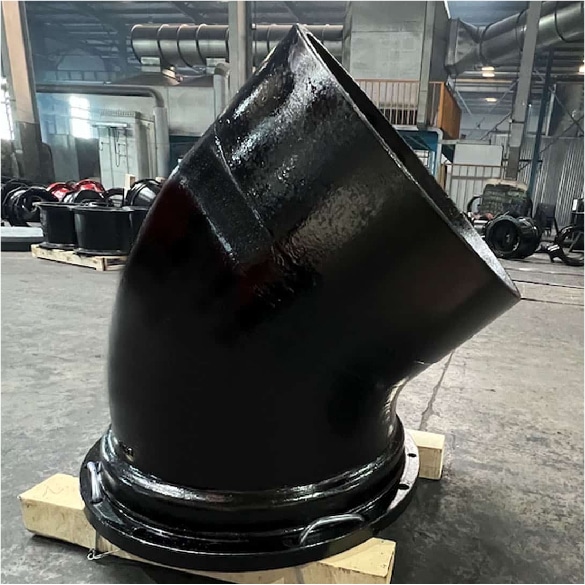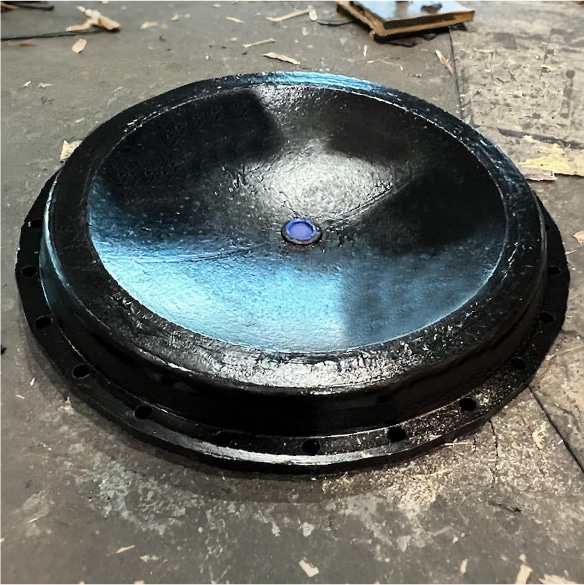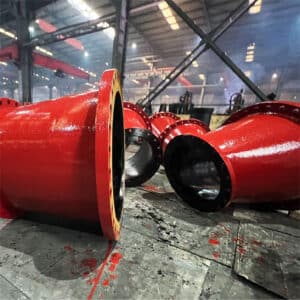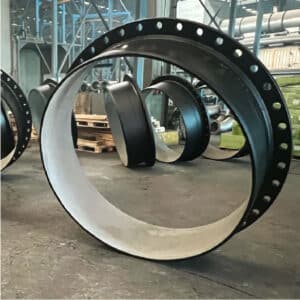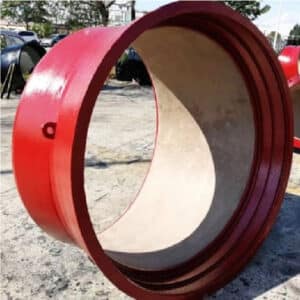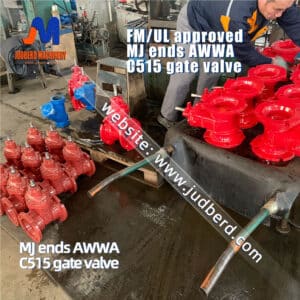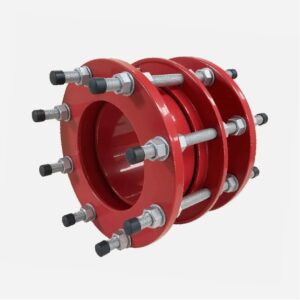AWWA C153 Mechanical Joint Fittings Manufacturer
AWWA C153 Mechanical Joint (MJ) Fittings are ductile iron pipe fittings that meet the AWWA C153 standard and are used in water, wastewater, and fire protection systems. These fittings connect to pipes using mechanical joints (MJ), which offer a flexible and secure connection without the need for welding or flanging.
Judberd is competitive china manufacturer for all types of AWWA C153 mechanical joint fittings, below photos are for your reference.
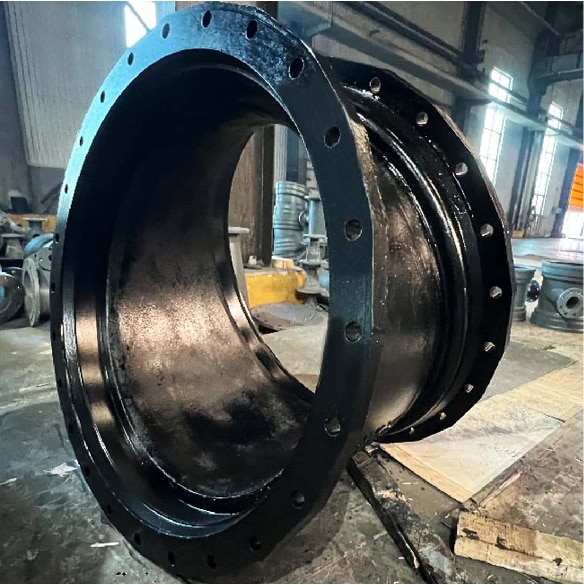
Bend
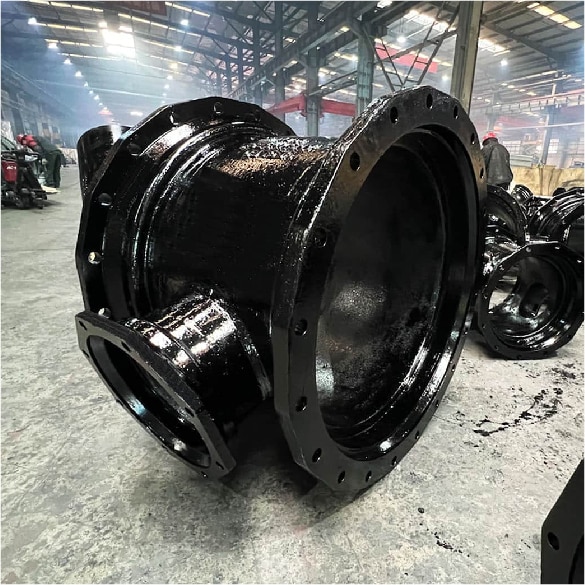
Tee
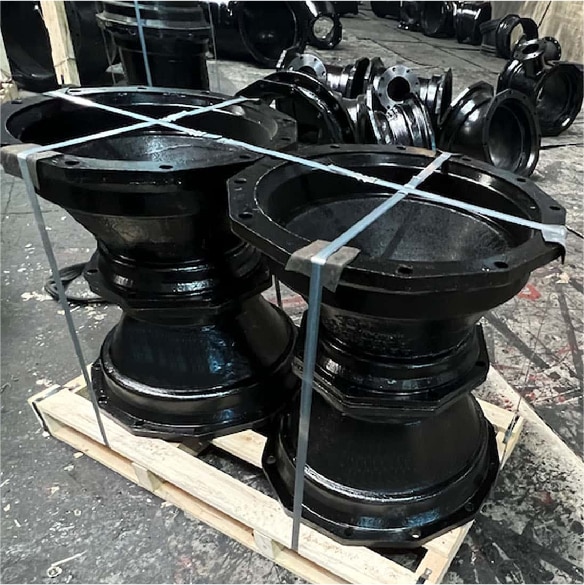
Reducer
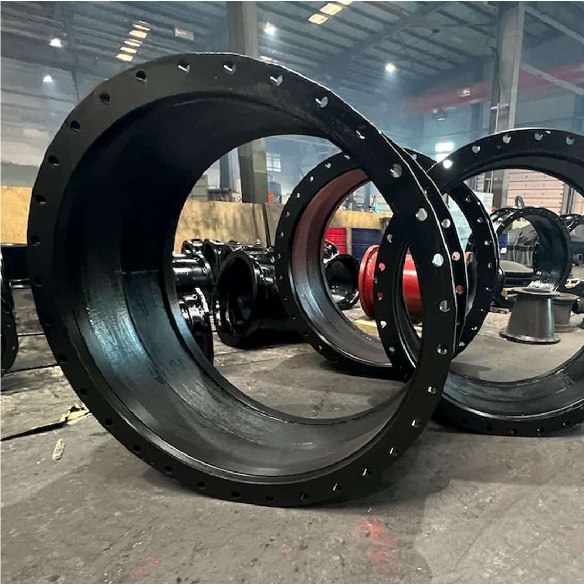
Sleeve
Connection Diagram
Notes
● 1, Diameter of cored holes may be tapered an additional 0.06 inch.
● 2, Dimension A in Table 1 is the OD of the plain end.
● 3, K1 and K2 are the dimensions all cross the bolt holes.The fitting bell and/or the gland may be polygon shaped.
● 4, The nominal thickness S of the fitting bell shall not be less than the nominal wall thickness of the fitting.
● 5, For ductile iron glands, the flange thickness M listed above is only required surrounding the bolt holes.ductile iron glands with reduced flange thickness between the bolts holes must meet the performance requirements Specified in ANSI/AWWA C111/A21.11.
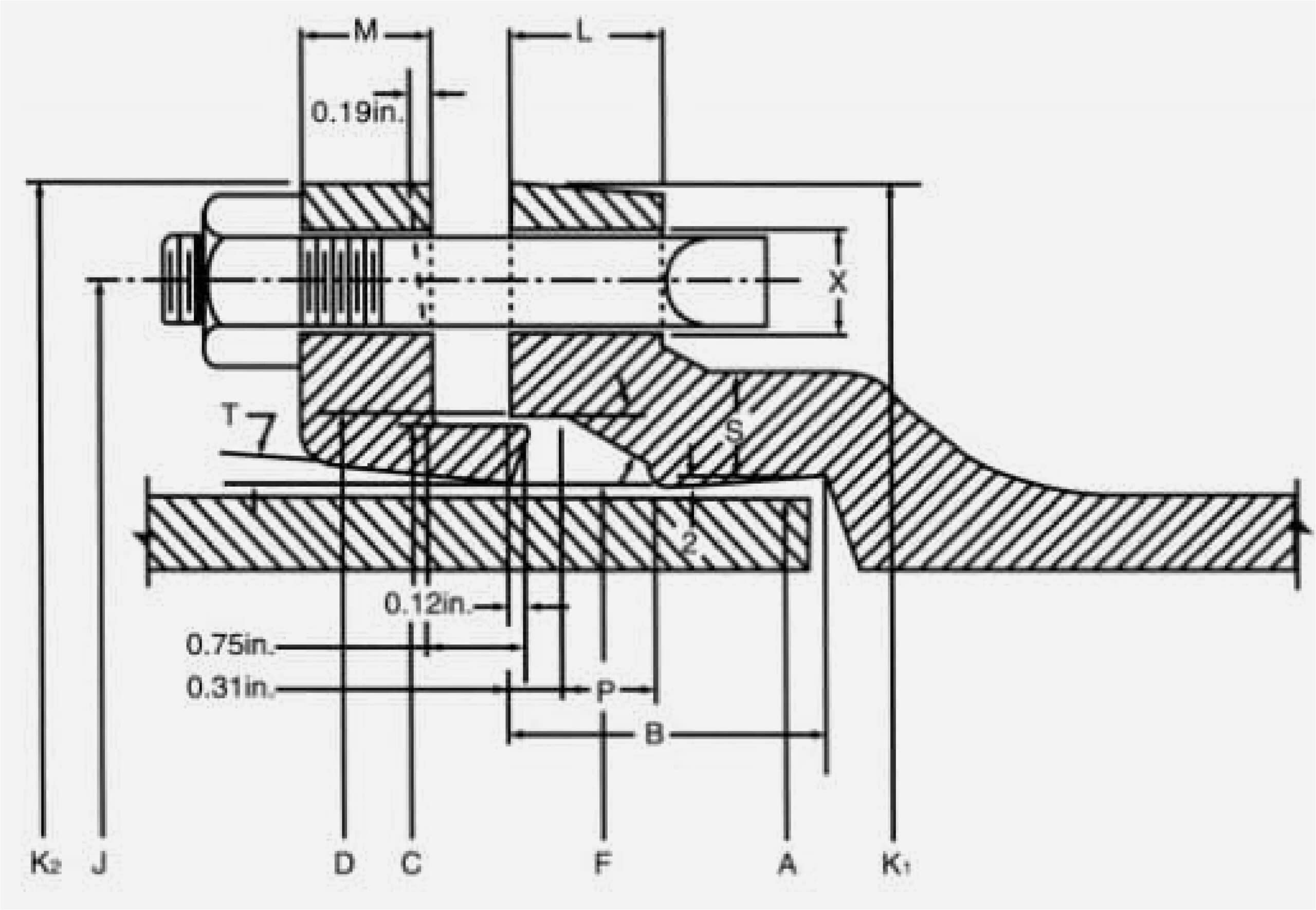
Features
Material
Ductile Iron (DI) – Stronger and more flexible than traditional gray iron.
Applicable Pipe Sizes
2″ to 48″ (DN50 – DN1200)
Pressure Ratings
2″ to 24″ sizes: Rated for 350 psi (≈24 bar),30″ to 48″ sizes: Rated for 250 psi (≈17 bar)
Coating Options
Fusion Bonded Epoxy (FBE), Asphaltic Coating or Other corrosion-resistant coatings
Fitting Types
Mechanical Joint 90° Elbows, 45° Elbows, Mechanical Joint Tees, Mechanical Joint Crosses, Mechanical Joint Reducers and Mechanical Joint Caps
How Do AWWA C153 Mechanical Joint Fittings Work?
Mechanical joint fittings use a gasket, gland (retainer ring), and bolts to create a leak-proof seal without welding or threading.
Installation Steps (video is on the right)
● Step 1, Clean the pipe end to remove dirt and rust.
● Step 2, Slide the gland (retainer ring) and rubber gasket onto the pipe.
● Step 3, Insert the pipe into the mechanical joint socket until it touches the bottom.
● Step 4, Push the gasket into place to create a tight seal.
● Step 5, Position the gland over the gasket, insert the bolts, and tighten them in a crisscross pattern.
● Step 6, Check for leaks and adjust the bolts if necessary.
Advantages of Mechanical Joints
01
Allows slight movement and deflection
(ideal for underground installations)
02
Easy to install and remove
(no welding or threading required)
03
Reliable sealing for
pressurized water systems
AWWA C153 vs. AWWA C110 (Key Differences)
| Standard | Material | Wall Thickness | Weight | Best Application |
|---|---|---|---|---|
| AWWA C110 | Gray Iron / Ductile Iron | Thick | Heavy | Suitable for high-strength and high-pressure environments |
| AWWA C153 | Ductile Iron | Thinner | Lightweight | Cost-effective, ideal for standard water pipelines |
AWWA C153 fittings have a thinner wall and lighter weight than AWWA C110, making them more cost-effective and easier to handle.
Applications of AWWA C153 Mechanical Joint Fittings
Municipal water
distribution systems
Wastewater
treatment plants
Fire Protection
Pipelines
Industrial Water
Supply Networks
Buried Pipelines (preferred over flanged connections)
Why Choose AWWA C153 Mechanical Joint Fittings?
Lightweight
_
Easier to handle and install than AWWA C110 fittings.
Durable
_
Ductile iron construction provides superior strength and flexibility.
Quick Installation
_
Uses simple bolt tightening, no welding required.
Leak-Proof Design
_
Ensures a secure connection with rubber gaskets.
Allows Pipeline Movement
_
Can accommodate minor shifts in buried pipes.

